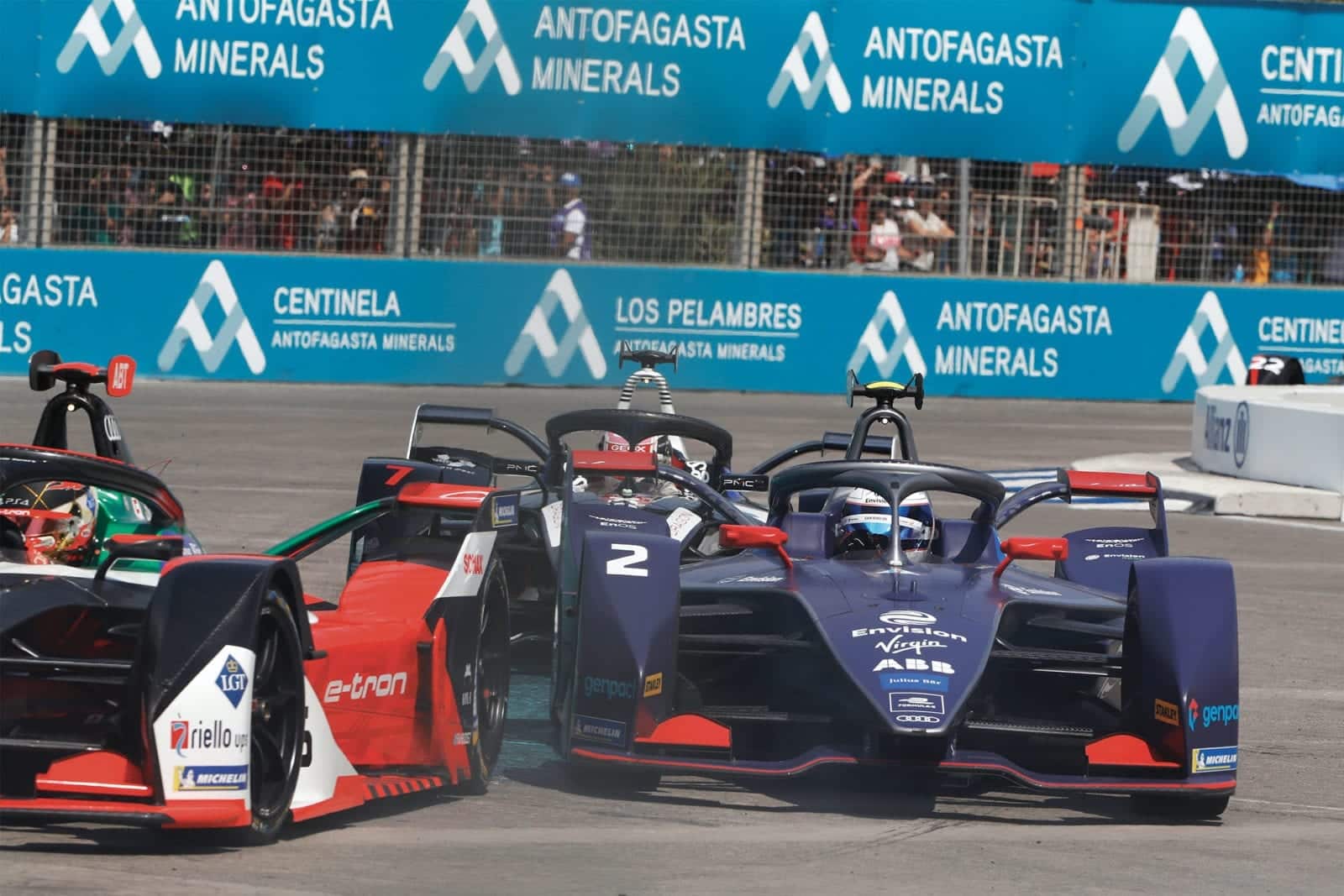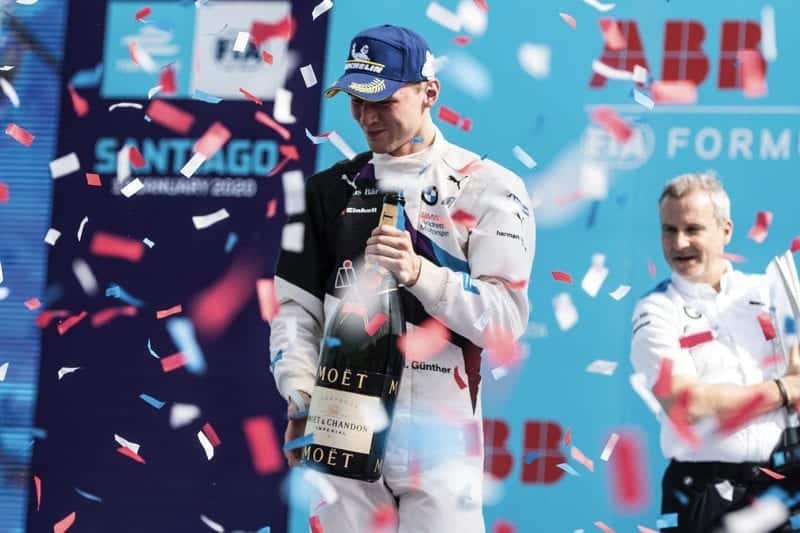Heat on the Santiago streets
A revised layout, high temperatures and plenty of twists and turns, Allan McNish explains how his Formula E team coped with Chile’s challenge

McNish believes Formula E should crack down further on aggressive driving
Motorsport Images
One of the greatest challenges in Santiago back in January was the temperature. Reaching 35°C on race day, we had to keep the cars and batteries cool – and not lose ours.
To prepare, we get a scanned circuit map that we plug into our on-site driver-in-the-loop simulator back at base in Neuberg.
The technology is incredible and vital, but especially in Formula E where the tracks are mostly so challenging because of their temporary city street circuit nature.

Energy management proved key in the Santiago race, which was won by BMW’s Max Günther
Motorsport Images
We knew that there were things like resurfacing and a different layout at the Parque O’Higgins track. You try to understand what you’re going to find when you get to the venue, but in reality, it’s only when you get out on the circuit that you understand whether your predictions and preparations are in-line. If it isn’t – as was the case for us to some extent in Diriyah on the first race day – then you’ve got an uphill challenge trying to get your way out of it due to the unique one-day schedule.
We arrived in Chile knowing it was not going to be as hot as last year, which was the hottest on record in the city, but it was still going to be roasting, and a race of managing tyre temperatures from the start, partly because of the new layout. The first sector has got some long corners that put a lot of energy into the tyre, but the chicane on the back stretch had been removed. This meant a long, loaded section, then lateral combination braking into Turn Nine, which puts major energy through the car.
You’re thinking about all that right from the start, while trying to predict where the battery temperature is going to be, because that is fundamental for the package in terms of thermal management.
You also need to ensure there’s enough regeneration to keep energy and performance levels up. It’s a delicate balancing act and a fascinating challenge to test engineer and driver.
I think we actually hit it quite well. We were in very good shape in the race and the Audi e-tron FE06 was very efficient. That allowed Lucas (di Grassi) to come through from the back after an incident in qualifying when he was distracted by avoiding Oliver Rowland’s crash.
In terms of race management, it was an evolving task, because it depended on the performance of everybody else as well. So ultimately, you have got your lap predictions in the race, but it could quite easily have extended as we race to 45-minutes plus one lap.
If the pace of winner Maximilian Günther had kept up, then everybody would have been struggling for energy at the end of the race. It was really quite a sensitive one, but I think the focus on energy made it a really spectacular race. Everybody was dancing on the knife-edge of pretty much everything, plus there was quite a few people out of position because of the qualifying groups, and the way that the track grip evolved through qualifying, too.
“There were penalties, and the elbows were pretty damn sharp”
The fact that those drivers were coming through the field meant that there was some very robust driving during the race. Some got their wrists slapped for it. There was also some bloody good overtaking as well and it was one that I enjoyed reviewing after travelling back home.
I think some of the moves and the penalty process may be reviewed again. I understand letting them race, but there were a few penalties after the event and the elbows were pretty damned sharp in stages.
Although the stewards can also initially warn drivers for overly aggressive moves, there were situations that actually didn’t require a warning – as they were beyond a warning in my opinion. There were some that I looked at and winced a little bit, thinking I wouldn’t like to be on the receiving end!
We want to have open racing, but at the same time, we don’t want stock-car-style racing.

Günther took his first Formula E victory in Chile, beating António Félix da Costa (DS) and Mitch Evans (Jaguar)
Motorsport Images
Daniel (Abt) had a more difficult weekend than Lucas. He got slightly caught up behind Robin Frijns’ spin at Turn Two in qualifying. Ultimately it cost two- or three-tenths, which would have put him just on the edge of superpole. Then he received a penalty after the race for causing a collision, which pushed him out of the points and was a real shame.
But in terms of the championship, we are optimistic. Lucas is P5 in the standings, 14 points off the top, and we’re 28 points away in the teams’ championship, which is significantly better than where we have been in the last two years at this stage.
The way the championship is designed, and how the qualifying groups are structured, it plays out so a lot of drivers are in the mix throughout the season.
But I’m not totally content with how we come away from South America. We could have left with more than we got, but knowing the performance we’ve got in the car and the drivers, I think it gives us a reason to go to Mexico – somewhere that’s always been a good circuit for us – with confidence.
If it is even half as dramatic as it was in 2019 when Lucas won it on the line after passing an energy sapped Pascal Wehrlein then you won’t want to miss any of the action.
Allan McNish is the Team Principal of Audi Sport ABT Schaeffler Formula E Team as well as being a three-time Le Mans winner.

